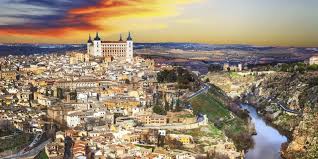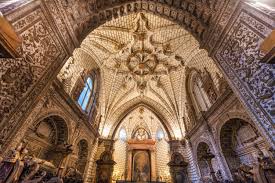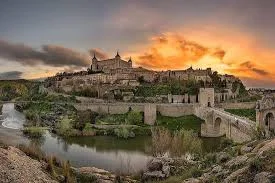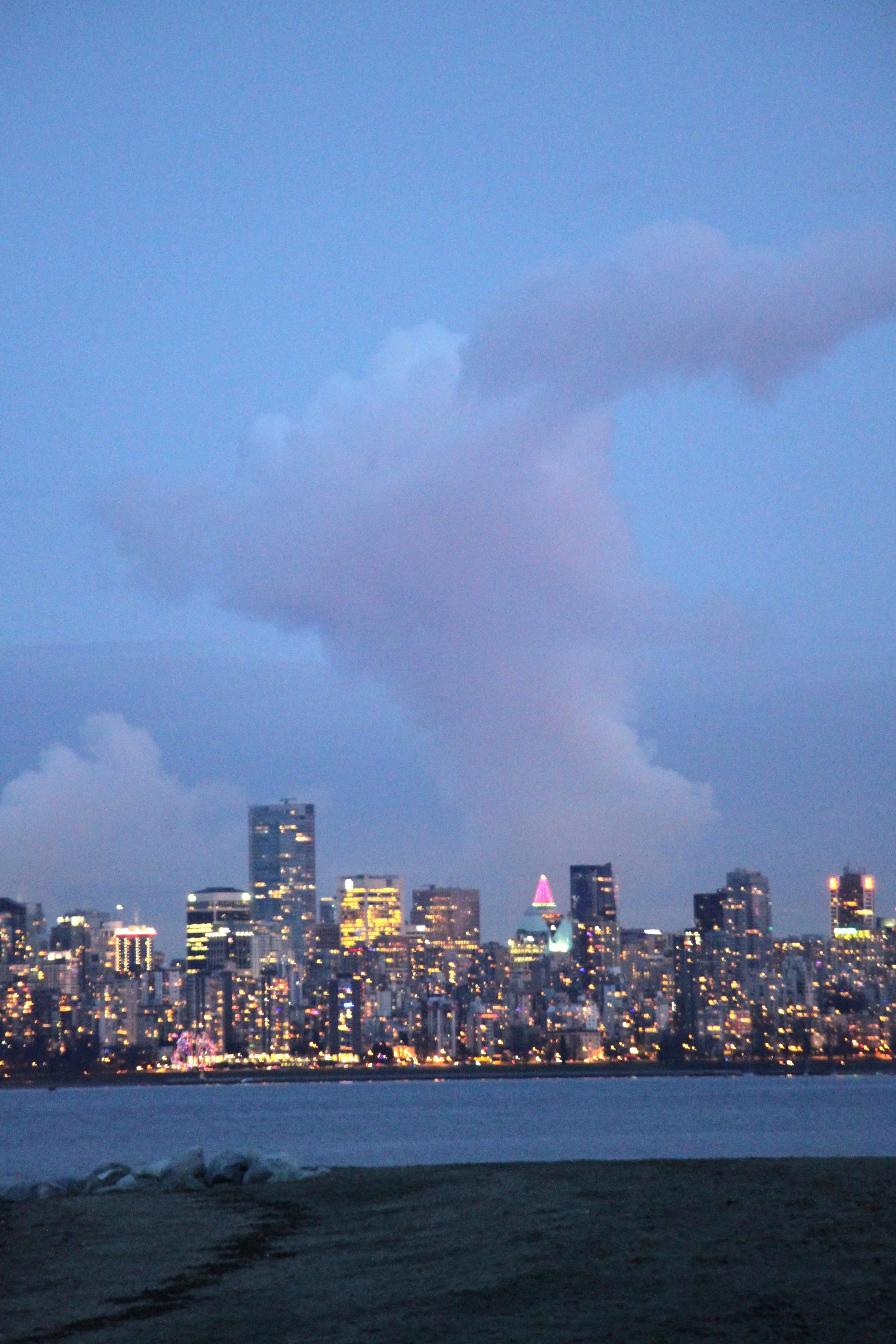Toledo, A City with A Heart Made of Steel.
Perched atop a series of rocky mounds that rise from the arid plains of Don Quixote’s La Mancha, the small city of Toledo is a veritable giant when it comes to Iberian history. Until the 16th-century this was the seat of government before Madrid took over the reigns and began running the country.
Over a rather bloody two thousand years, Toledo’s tortuously steep, cobbled streets and lanes were variously trodden by Romans, Visigoths, Jews, Arabs and Christians, all of whom left their indelible mark on the city’s architecture, culture and general way of life.
The old, walled city is protected on three sides by steep gorges and the fast flowing Tagus River which proved a formidable barrier to invading armies over the centuries. Standing on the opposite bank of the river and looking back at the city, two vast structures will catch the eye. The first of these is the imposing fortress of Alcazar ‘perched’ on the edge of the hill for centuries guarded the region and, when armies were housed here it’s vast subterranean stables were able to accommodate over 2000 horses!
Look slightly to the left and the eye is instantly drawn to perhaps one of the greatest cathedrals in all of Europe. Toledo Cathedral’s spire alone rises majestically a dizzying ninety- three meters over the myriad of terracotta-roofed houses that cling precariously to the sides of the hill. Each evening the spire is floodlit so that it resembles an elaborate and elegant finger pointing directly towards heaven.
Toledo Cathedral, or to refer to it by its historic name, the Santa Iglesia Cathedral, constructed over a period of 270 years stands testimony to Spain’s divine destiny. Only when one has passed through the unimposing hinged doors does one begin to comprehend the vast expanse of the interior with its seven bays and twenty - seven ornate gilded chapels.
The almost overwhelming size of the structure has about it a feel of a military academy as if one has stepped into the epicentre of a giant war machine. Within these cloistered halls, journeys of conquest were planned whereby armies were dispatched to countries far and wide to conquer the Moors and other ‘unbelievers’ in the name of God.
Underfoot, long dead cardinals lie entombed while overhead their sacred caps hang from the transepts like faded battle flags. Galleries, resplendent with works by El Greco, Reubens and Raphael depict these self-same cardinals whose portraits resemble generals fresh from far-flung wars.
This imposing edifice is almost too much to take in, rather like St Peter’s or the Vatican in Rome, with its gilded cherubs and angels gazing down from on high coupled with the throngs of tourists and day trippers who crowd its filigreed cloisters.
After a couple of hours, I retreat to the impossibly narrow cobbled lanes and take sustenance at one of the many bars which line the streets sitting cheek by razor-sharp jowl with sword and knife emporiums.
Toledo has, for centuries been renowned for its swordsmiths and now, in modern times their skills are devoted to the crafting of chefs knives and the manufacture of swords for the Matadors and bullfighters around the country.
I watch as city council workers busily festoon the walls with crimson banners and string elaborate canopies and ornate lamps along a certain route throughout the city. In a few weeks, the town will celebrate their holiest of days, ‘Corpus Christi” when precious icons from the cathedral will be paraded past worshipers and the streets will become black with priests.
I have been here now for just four days and have visited several Michelin starred or Michelin recommended restaurants that are tucked away down laneways with barely a sign to advertise their presence. I feel that without the steep streets to walk ‘home’ by, I would resemble the Michelin Man myself before I depart this fair city.
As I wander these laneways I let my hands wander along the walls, some of which predate the birth of Christ and wonder what these ancient stones have witnessed. This is a city with a violent past which has succumbed to sieges, invasions and intense bombing during the Spanish Civil War
In, addition Toledo could not escape pestilence and plague when on August 23, 1580, a great epidemic of catharro swept through Castile and took its toll on the citizens of Toledo as I learn from Antonio de Villacastín’s memoirs:
“Neither there was a doctor who visited or just a crier to administer the sacraments, and they buried the dead without bells and in the graves, they put 7 and 8 and more in each one; In the month of October of that year a third of the people in the city perished.”
It seems it is a place of devotees coupled with terrible atrocities of which the Spanish Inquisition was one, where, in Toledo it is said that over 20,000 ‘heretics’ were burnt at the stake although my trusty city guides were loathe to speak of a period of history that it’s citizens seemingly would rather forget.
Toledo seems never to be far away from warfare as the city was a prime target during the Spanish Civil War. Towards the end of a protracted siege, Colonel José Moscardó Ituarte held the coty against overwhelming Spanish Republican forces during the Siege of The Alcazar. The incident became a central piece of Spanish Nationalist lore, especially the story of Moscardó's son Luis. The Republicans took 16-year-old Luis hostage and demanded that the Alcázar be surrendered or they would kill him. Luis told his father, "Surrender or they will shoot me." His father replied, "Then commend your soul to God, shout 'Viva Cristo Rey' and die like a hero”.
Toledo, if you visit Spain be sure to stop by, I guarantee you will not be disappointed!














